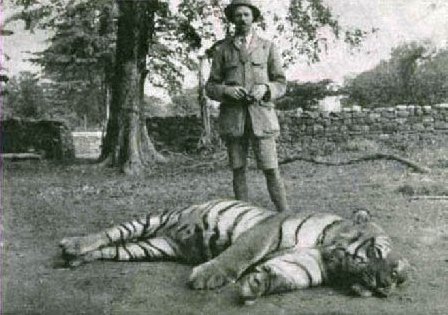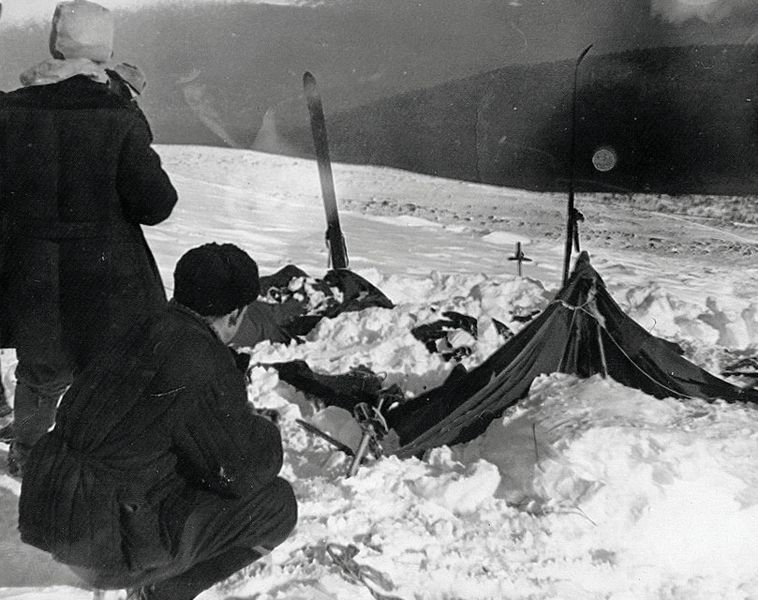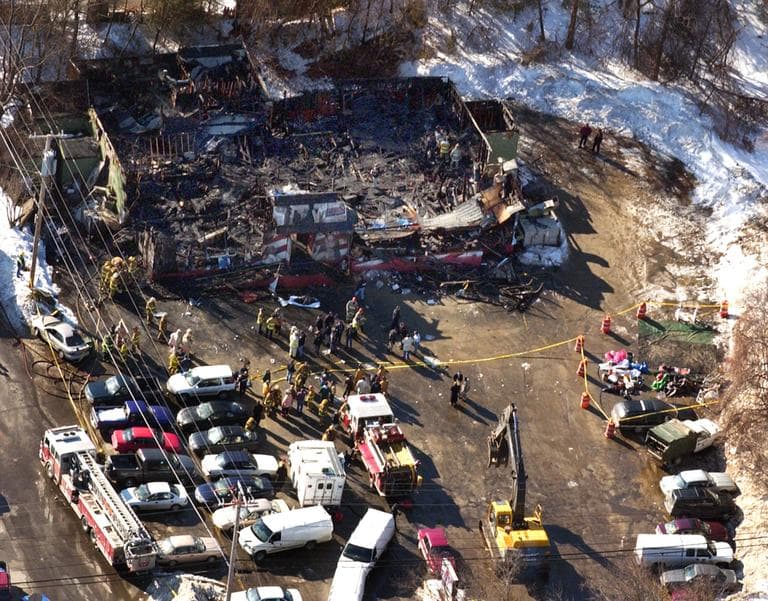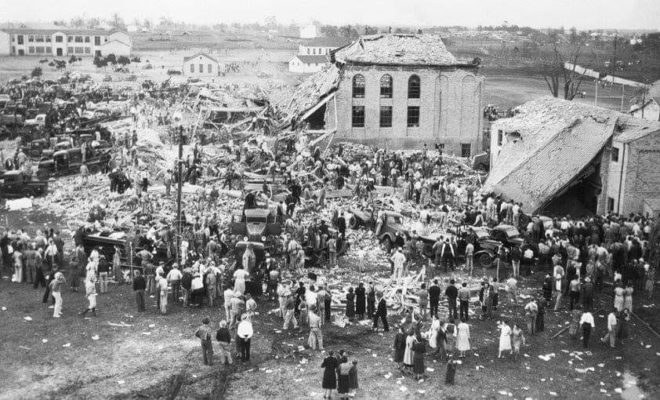A tragedy is defined as an event that results in great loss, misfortune, and usually death. They can surround an individual’s endeavors in which they suffer extreme consequences from a disastrous flaw or lifestyle, but often an unpreventable natural occurrence sets the stage for utter catastrophe. The most common examples are earthquakes, tornadoes, hurricanes, floods, automobile, and plane crashes. Throughout history many strange and unexpected events have caused pain and suffering to millions of people. From these experiences we learn more about how to predict and prevent these occurrences from happening again. I have compiled a list of some of the worst and unusual world tragedies and the events surrounding them.
10. Champawat Tiger & Panar Leopard

The Champawat Tiger is a legendary female Bengal Tiger. She is allegedly responsible for more then 400 human deaths in Nepal and the Kumaon area of India in the early 20th century. This tiger was often seen roaming the streets outside populated villages and would even try to break into huts. She was shot the day after killing a 16-year-old girl. Even today there remains a “cement board” marking the place where the tiger fell in Champawat town. An autopsy revealed that the tiger had broken upper and lower canine teeth on the right side of her mouth, which is often the case with man-eating animals. As humans are easier forms of prey. Around the same time the Panar Leopard was terrorizing people in the Kumaon District of Northern India. This male leopard is also alleged to have killed around 400 citizens, striking utter fear in the parents and children of many small villages. Both of these animals were hunted down and killed by legendary big cat hunter and author Jim Corbett. Corbett was an Indian-born British conservationist who was extremely talented at stalking and killing man-eaters. These two animals are widely regarded as the most deadly of all time.
9. Dyatlov Pass Incident

In late January 1959 a group of experienced skiers and hikers set out on a voyage across the northern Urals, which is near the Russian city of Ekaterinburg. Led by Igor Dyatlov, the goal of the expedition was to reach the mountain of Otorten. Everything was going as planned for the group of nine until they lost their direction and deviated west toward the top of Kholat Syakhl. Dyatlov quickly realized the mistake and set up camp on the slope of the mountain intending to backtrack the following day. They never made it and when they did not send a telegraph as expected a massive man hunt was conducted. The lifeless bodies of all nine people were mysteriously found spread over a large area. Many abnormalities had occurred. There was evidence that the group fled their tents in the middle of the night as they were ripped out from within. All deaths were thought to be from hypothermia until autopsies were performed. Four of the hikers were determined to have died from a force that could not have been inflicted by another human. They had chest and head trauma equivalent to a high speed car crash. The bodies had no external signs of injury. Some were wearing each others clothes, one victim had no tongue, and trace amounts of radioactive contamination were found on clothing. As the Soviet Union was in the middle of the Cold War the story was kept secret. The files were not made public and the final diagnosis was that the deaths were caused by an “unknown compelling force.” Many have speculated that the tragedy was the result of military testing, an unexplained UFO encounter, or a mysterious Yeti like creature. You decide for yourself.
8. Boston Molasses Disaster

Molasses is a by-product from the process of transforming cane or beat into sugar. It is an extremely thick and syrup-like substance. On January 15, 1919 a cast-iron tank was transporting molasses in the industrial North End of Boston, Massachusetts. On board was two-and-a-half million gallons of crude molasses on its way to a distillery. It was to be fermented into rum. Suddenly the truck burst creating a loud rumbling noise reminiscent of machine gun fire. A 15 ft. tall wall of molasses steamed through the Boston streets traveling at approximately 35 mph. It demolished buildings and buried everything in its path of destruction.
Several blocks were flooded. 21 people and several horses were buried and killed by the quicksand like sweet substance. Over 150 people were injured. The clean-up took weeks and approximately 87,000 man hours. The cause of the truck accident is not certain, but the vast increase in temperature that day played a part. The temperature had risen 39 degrees from the previous day causing increased pressure in the tank. Even today on a hot summer Boston afternoon people report the smell of molasses in the air.
7. Charkhi Dadri Mid-Air Collision
Dying in a plane crash might be the most terrifying way to leave this world. Your chance for survival greatly diminishes when you are involved in an aviation disaster. On November 12, 1996 Flight SVA 763 departed New Delhi, India in route to Dhahran, Saudi Arabia. At the same time Air Kazakhstan Flight 1907 was descending and preparing to land in New Delhi. Approximately eight minutes after Flight SVA 763 took off it was cleared to climb to the altitude of 14,000 feet. At the same time Flight 1907 was descending to 15,000 feet. Suddenly the two aircrafts slammed into each other head on completely destroying both planes.
All 349 people involved in the accident were almost instantly killed, making this tragedy the worst mid-air collision to date. The cause of the accident was subsequently blamed on the smaller Flight 1907 which had descended to quickly. Indira Gandhi International Airport did not have the advantage of secondary surveillance radar and was only given approximate readings for the aircrafts altitude. It also only had one corridor for departing and arriving planes. This disaster directly led to strict policy changes in India.
6. The Station Nightclub Fire

On February 20, 2003 the hard rock band Great White was set to perform at Station Nightclub in West Warwick, Rhode Island. As the band was beginning their set pyrotechnic sparks were set off for visual effect. Almost instantly a flash fire began to engulf the stage. Fire alarms were sounded and a crowd of over 400 people all rushed towards the front exit. People were panicking and a crush formed in the small and narrow hallway leading to the exit. This completely blocked the passage. The entire club was engulfed and burned to the ground in six minutes. 100 people were killed by the fire, 230 were injured, and only 132 made it out unharmed.
It is considered the fourth deadliest night club fire in United States history. It was a bone chilling revelation as news cameras filmed the parking lot which was completely filled with victim’s cars. The silence of the burned down complex was deafening. This tragedy has greatly influenced national model building and fire safety codes. It also led to the Statue of Liberty being shut down to all visitors due to subpar evacuation routes.
5. Basra Poison Grain Disaster

In September of 1971 90,000 metric tons of American barley and Mexican wheat were shipped to the Iraqi port of Barsa. It was intended to be used as only seed grain and not to be directly ingested by the population. The barley and wheat was treated with antifungal methylmercury to prevent it from developing mold. The grain was dyed pink and the bags marked as poisonous, although warnings were printed in only Spanish and English. Some time after delivery to the port it was ransacked and many of the bags of grain were stolen. Subsequently they were sold to the local population. Almost immediately thousands of people reported mercury poisoning. Local hospitals and government aids knew something was terribly wrong. Iraqi officials kept the tragedy under wraps until an American reporter discovered the unusual and vast amount of reported poisonings. It is believed that around 500 people died from the barley and wheat, but some estimates are much higher.
4. New London School Explosion

In the middle of the 1930’s the Great Depression was hitting America hard. In 1930, oil was discovered in Rusk County, Texas, making this area of the United States the richest in the country. An enormous school was built in New London. The structure had 72 natural gas heaters installed. In 1937, the school district cancelled their natural gas contract and had a residue gas line installed to save money. This new raw gas line varied in the quantity of gas delivered to the building. In its natural state gas is both odorless, colorless, and leaks are undetectable. Nobody realized that gas had begun to escape and build in the enormous crawlspace underneath the structure. On March 18, 1937 an instructor at the school turned on an electric sander to do some work in the basement. Almost instantly a small spark caused the entire New London School to explode. It was completely demolished and approximately 300-500 students and teachers lost their lives. It remains the worst catastrophe to occur in a U.S. school building. This tragedy directly led to the law that thiols be added to natural gas. This way the strong odor of thiols can quickly help detect natural gas leaks.
3. Lake Nyos Disaster
Lake Nyos is an active crater lake located in the Northwest Province of Cameroon. When there is an enormous volcanic eruption that creates a large crater in the ground often a lake is formed. These lakes usually consist of fresh water and cover active volcanic vents. When this happens the water becomes acidic and fills with certain gases. Usually the turnover of these stratified waters occurs gradually and harmless amounts of the gases are periodically released into the atmosphere. Lake Nyos is one of three known lakes where a pocket of magma in the depths of the lake gradually leak carbon dioxide forming a pocket.
This pocket builds up until one large natural phenomenon releases enormous amounts of the gas. On August 21, 1986 about 1.6 million tonnes of CO2 suddenly released from Lake Nyos. Scientists predict that this might have occurred after a landslide in the depths of the lake. The death cloud rushed down two valleys towards the villages of Cha, Nyos, and Subum. Everything within a 15-mile radius of the lake was killed. Approximately 1,700 people and 3,500 livestock were suffocated by the gas. It was the first known large scale asphyxiation caused by a natural occurrence. In the aftermath scientists decided to install tubes in the lake to allow the carbon dioxide to leak gradually in safe quantities.
2. Mount Pelée Eruption

The events surrounding the worst volcanic eruption of the 20th century are truly unique. Mt. Pelée towers over the city of Saint-Pierre, Martinique, an island in the eastern Caribbean Sea. In 1902, local residents began to notice unusual volcanic vent holes, earth tremors, the undeniable smell of sulphur, and the constant raining of ash on the city. This made the land surrounding the volcano inhabitable and hundreds of native snakes invaded Saint-Pierre. A scene straight out of the Old Testament enormous 6 ft. long serpents terrorized residents killing over 50 people and hundreds of live stock. The snakes only escape from the volcano was a path directly through the city. Nothing like this had ever been scene or recorded in recent history. Unfortunately the terror was only beginning for the island’s residents as a few months later Mount Pelée experienced an enormous eruption annihilating everything. Over 30,000 people were instantly killed by the disaster. There are reports of only two survivors. One was in a poorly ventilated dungeon-like jail cell and the other was living on the extreme edge of the Island. Both men experienced horrible burns. It remains the worst natural disaster in French history.
1. Bhopal Disaster
Bhopal is the capital of the Indian state of Madhya Pradesh. It houses the Union Carbide pesticide plant. Unfortunately in the 1980’s many industrial plants in this area lacked a solid infrastructure and training programs. During the evening of December 3, 1984 a large amount of water entered a tank containing 42 tonnes of methyl isocyanate, an intermediate chemical in the production of carbamate pesticides. The chemical reaction increased the tanks temperature to over 200 °C, subsequently releasing a large amount of toxic gases on the city. Many citizens awoke with an intense burning sensation in their lungs and were choking to death. As one would anticipate panic ensued on the streets of Bhopal with many people being trampled to death. More then half a million people were exposed to toxic gases.
In all it is estimated that 10,000 people died within 72 hours of the accident. 25,000 have since died from different gas-related diseases. The means by which the water entered the chemical tank has yet to be fully understood. The Bhopal disaster is often referred to as the world’s worst industrial tragedy. It is truly one of the most devastating accidents in modern history. The Indian government has learned much from the incident and has implemented strict rule changes and formed numerous training programs.
13 Comments
My mother survived the Bhopal Gas Tragedy. She was only 8 years old at that time when the incident happened but she remembers everything. Her parents awoke at midnight coughing and unable to breathe properly and they all (my mom, her parents and 3 brothers) rushed outside in the cold. The streets were crowded and many people died not because of suffocation but because of being trampled and exposure to extreme cold. People refused to share blankets or food items. It’s a miracle how my mom and her entire family got out alive without any major injury/gas related problems. But now sometimes my mom complains about a burning sensation in her throat and difficulty in swallowing food which possibly is an effect of the leaked gas. The incidents still haunts a lot of people and listening to my mother telling the incident runs shiver down my spines.
https://www.youtube.com/watch?v=B-BuHO7-YHA
see this video then you won’t see other it’s my chalenge…
Hold your heart And then see the video…..
What about the sinking of the Titanic in 1912? I mean of the 2200 passengers on board only approx 750 were saved. Therefor around 1450 of them died in very horrible tragic ways. Most drowned some probably died from the ship falling on them and a few from the panic of the others around them trying to get on a life boat. Not to mention the whole thing should never have sunk in the first place if they took time to really make sure the ship was fully ready to go. They rushed it and didn’t give it the proper tuneups before going because they didn’t want to push back the deadline to leave and also wanted to go as fast as the ship was able to go which was a lot more than other ships back then thus giving them less time to steer away from the iceberg that ultimately killed the majority of them.
good article, only issues I had was with the writing techniques. No reason to put in "Suddenly the tank exploded" or "suddenly this, suddenly that". We are talking about stuff that happened decades ago, and it is not written in the form of a story. Just say, "the tank exploded", leave the suddenly to the 5th grade story writers.
i thot the hiroshima tragedy should hev med t on your top 10.
@ "Keppoch": Obviously YOU are the one who is mistaken about the definition of this list, NOT "Concerned Reader." Would you call two planes colliding in midair due to human negligence a natural disaster? I certainly wouldn't. The one I am surprised to see missing from this list is the disaster at Chernobyl. Although only 56 people died due to the actual explosion, hundreds of thousands were exposed to the radiation and a huge land area became uninhabitable.
I considered the Halifax Explosion and it was one of the last items left off the list.
@ "Concerned Reader": 9-11 isn't a "natural" disaster and if you read the paragraph under the title, that's clearly the definition of the list. 9-11 was a planned event. Under your definition, you ought to have the Hiroshima and Nagasaki detonations.
One important occurrence missing from the list, though is the Halifax Explosion:
The Halifax Explosion occurred on Thursday, December 6, 1917, when the city of Halifax, Nova Scotia, Canada, was devastated by the huge detonation of the SS Mont-Blanc, a French cargo ship, fully loaded with wartime explosives, which accidentally collided with the Norwegian SS Imo in "The Narrows" section of the Halifax Harbour. About 2,000 people were killed by debris, fires, or collapsed buildings and it is estimated that over 9,000 people were injured. This is still the world's largest man-made accidental explosion.
I just wonder why "9-11" is not on the list. More than 3000 people lost thier lives…well over the numbers of any one of the above stories, and what is more bizarre than terrorists flying planes into buildings?
9-11, although very tragic, only killed 3000 people compared to the 10,000 in Bhopal. I think the American people like to overemphasize the point of 9-11 and let me not in any way underestimate the seriousness of the disaster but it is by far not the worst if and when death toll is taken into account.
what about the hiroshima bombing and chernobyl disaster? both unusual as neither have been repeated before or after on the same scale. and the effects of both are still felt today through genetic malformations.
There is a glaring error in this – the molasses disaster happened when a huge tank of molasses erupted, not when a truck carrying molasses did. There is no way that much molasses could fit in a truck's tank at that time period.
Wow!! Bizarre!!
BRILLIANT…and chilling!